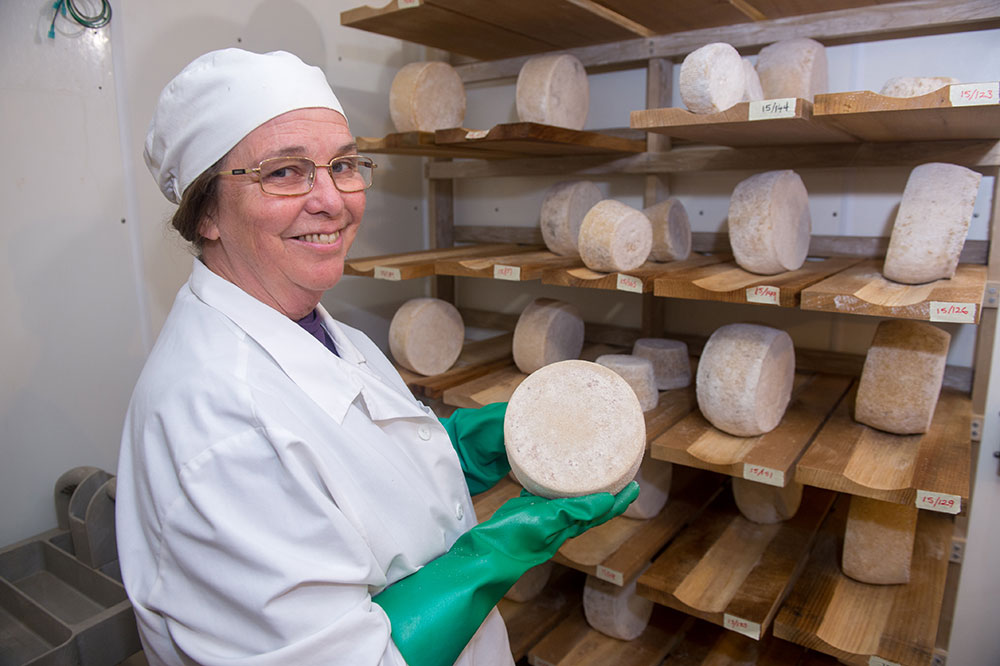From Thomastown to Your Table: The Quality of Floridia Cheese Melbourne
From Thomastown to Your Table: The Quality of Floridia Cheese Melbourne
Blog Article
Opening the Keys of Artisanal Cheese Making: A Detailed Do It Yourself Guide
In the realm of culinary workmanship, artisanal cheese making stands as a testament to the delicate balance in between tradition and advancement. As we get started on this journey to demystify the art of producing splendid cheeses, we are faced with a tapestry of skills and secrets waiting to be untangled.
Choosing the Right Milk
When starting the trip of artisanal cheese production, the option of milk plays an important function in figuring out the high quality and attributes of the end product. The kind of milk picked impacts the flavor, texture, and overall account of celebrity. Raw milk, directly from the animal, is chosen by many artisanal cheesemakers as a result of its one-of-a-kind mix of enzymes, germs, and flavor compounds. However, making use of raw milk features regulations and threats, making sterilized milk a safer alternative for newbies.
When picking milk for cheese making, it is necessary to think about the fat content. Higher fat web content in milk can lead to a creamier and richer cheese, while reduced fat material might result in a drier and stronger texture. Furthermore, the source of the milk, whether from cows, goats, sheep, or buffalo, adds unique tastes and attributes to the cheese (Melbourne Made Cheese). Each type of milk brings its very own nuances, enabling for a vast array of cheese varieties to be crafted based upon the chosen milk. Inevitably, the option of milk is an essential choice that sets the structure for a successful artisanal cheese-making undertaking.
Culturing and Coagulating
To start the cheese-making procedure, the essential steps of culturing and coagulating should be very carefully performed to transform milk into curds and whey. The type of society made use of can substantially affect the flavor, texture, and ripening of the last cheese item.

The timing and temperature level control during culturing and coagulation are critical variables that influence the final end result of the cheese. Proper implementation of these steps is essential to ensure the preferred texture, taste, and consistency of the artisanal cheese being produced.
Draining Pipes and Pressing Curds
After the milk healthy proteins have coagulated and the curds have actually been cut to release whey, the following vital step in artisanal cheese making involves draining pipes and pushing the curds to achieve the wanted appearance and consistency of the last cheese product. Draining is the procedure of separating the curds from the whey. This can be done by moving the curds into a cheesecloth-lined colander or mold and permitting the whey to drain pipes off naturally. The moment for draining pipes can differ depending upon the kind of cheese being made and the desired moisture content.
Pushing aids get rid of any kind of remaining whey and compacts the curds to form a solid cheese wheel. Appropriate pressing and draining are important steps that considerably affect the top quality and qualities of the artisanal cheese being created.
Aging and Flavoring Techniques
Implementing meticulous aging and Go Here flavor strategies is essential in improving the deepness and intricacy of artisanal cheeses, elevating their taste accounts to elegant degrees of refinement and elegance. Aging plays a vital role in developing the one-of-a-kind tastes and textures that distinguish artisanal cheeses. Throughout the aging process, cheeses are stored in carefully regulated atmospheres where factors such as moisture, airflow, and temperature level are manipulated to urge the growth of advantageous mold and mildews and microorganisms. This regulated atmosphere allows the cheese to mature gradually, establishing rich flavors and complex fragrances.
Flavoring techniques also contribute significantly to the last taste of artisanal cheeses. Cheesemakers may pick to present additional tastes by integrating active ingredients such as natural herbs, spices, or also fruits right into the cheese during the manufacturing process. Additionally, some cheeses are cleaned or scrubed with numerous liquids, such as salt water or alcohol, to enhance their structures and tastes.
Wrapping and Keeping Cheeses

Verdict
In verdict, mastering the art of artisanal cheese making includes carefully selecting the ideal milk, adhering to precise culturing and coagulating procedures, draining pipes and pressing curds efficiently, and making use of various aging and flavor strategies. Keep in mind to cover and save your cheeses correctly to guarantee optimum flavor and structure development.
Each type of milk brings its very own nuances, enabling for a wide variety of cheese varieties to be crafted based on the selected milk.After the milk healthy proteins have actually coagulated and the curds have been cut to release whey, the following important step in artisanal cheese making entails draining and pushing the curds to achieve the preferred appearance and uniformity of the last cheese product. The majority of cheeses must be wrapped in wax browse this site paper or cheese paper to allow them to breathe while shielding them from drying out. For cheeses that need to continue aging, such as bloomy rinds or washed peels, guarantee they are saved in a cool atmosphere like a cheese cavern or a refrigerator established to the ideal temperature level. By paying interest to the covering and storage of artisanal cheeses, cheese makers and fanatics can protect the honesty of click here to find out more these specials and completely enjoy their intricate tastes.
Report this page